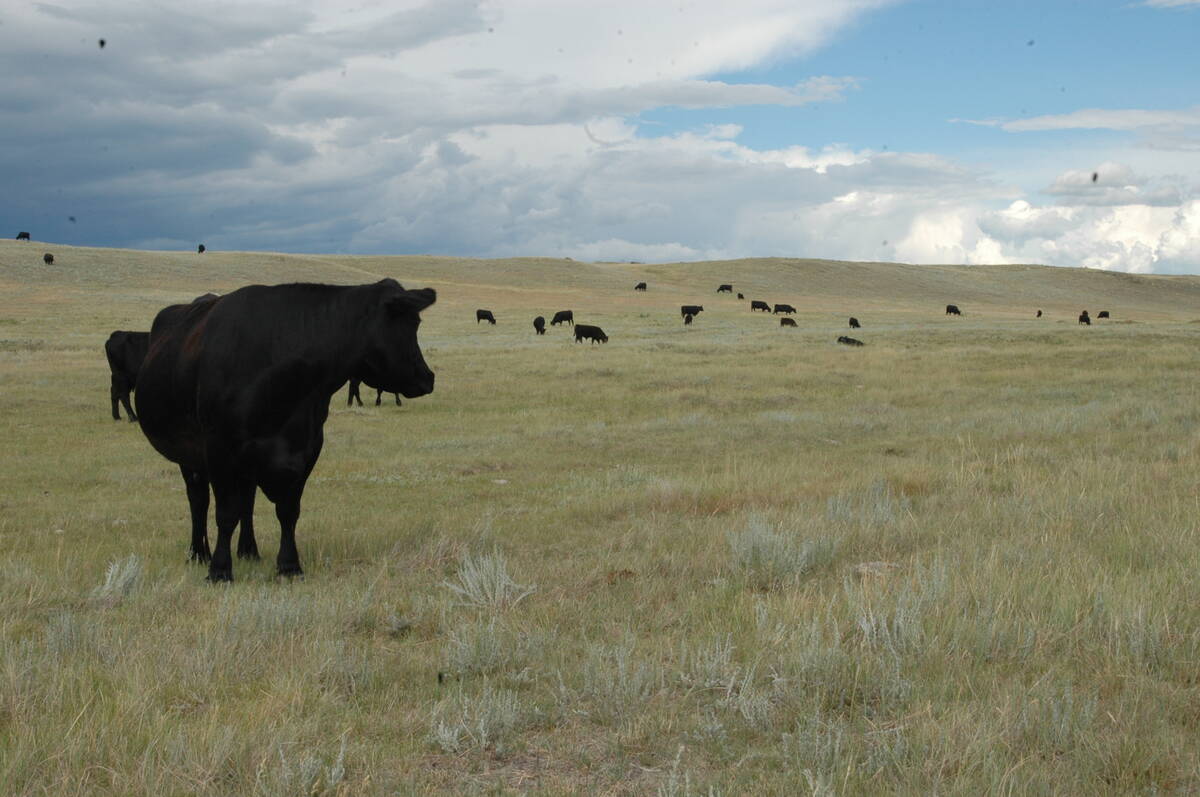The study characterizes cattle behaviour, such as aggressiveness, and its link to negative health and welfare outcomes
Measuring the temperament of beef cattle could help predict disease susceptibility and manage high-risk animals.
Development of a chute-side test using feedlot cattle temperament as an indicator of disease resilience is the focus of a new five-year research study at the University of Saskatchewan’s Western College of Veterinary Medicine in Saskatoon.
“The way I use the word temperament is as a set of behavioural traits that are consistent over time and determine how an animal responds to any given situation,” said Diego Moya, assistant professor at the WCVM.
Read Also

Canadian Food Inspection Agency slammed for handling of bovine tuberculosis case
The federal government leans heavily on producers to “take one for the team” and risk their livelihoods without any reassurance of support.
“One of the major issues that I’ve been facing when talking to the industry and to producers are some of the health issues that they are facing on the feedlot cattle,” said Moya, a specialist in beef cattle welfare and behaviour.
The project was recently awarded $152,500 to evaluate the use of beef cattle temperament as an on-farm indicator of disease susceptibility, which will be carried out at the university’s Livestock and Forage Centre of Excellence and campus research farm.
It’s one of the 32 projects that U of S researchers were awarded recently from Canada’s Natural Sciences and Engineering Research Councils Discovery Grants program totalling $5.7 million.
Moya’s project will characterize cattle behaviour, such as aggressiveness or fear reactivity, and its link to negative health and welfare outcomes.
He said there are two ways cattle temperament can modulate or change the physical and physiological response to health issues.
First, cattle that have fractious or irritable temperaments are more likely to be at a higher risk of injuries, such a lameness, which may influence access to environmental and social resources, such as undesirable feeding patterns.
The second way is that certain temperament patterns are associated with greater basal concentrations of stress hormones like cortisol, which lowers growth rates and creates a weaker immune response.
Moya’s research will test and measure beef cattle temperament to predict an individual’s associations with treatment failures and negative health outcomes.
Unlike industries such as dairy, swine and poultry that use sensors to monitor how animals are performing, the beef industry, particularly feedlot cattle, mainly relies on visual observation to evaluate herd health, which has little value for predicting and preventing disease.
“Pen riders going from pen to pen and looking at those animals has proven to have low sensitivity and accuracy,” Moya said.
Feedlot cattle diseases, such as rumen acidosis and bovine respiratory disease, cause significant losses annually due to the cost of treatment, reduced growth performance and animal death.
“Despite the body of literature on different strategies to prevent and detect common feedlot diseases, its presence and severity at Canadian feedlots remains high. The study of cattle temperament is a novel approach that can help us to understand why and when these diseases occur, so producers can use this information to manage cattle at a higher risk of getting sick,” he said.
To test the theory that temperament of beef cattle can be measured to predict the susceptibly of disease, the five-year study has three stages:
- The first-year trial is expected to develop and evaluate the efficacy of chute-side tests to characterize animal behaviour at the feedlot.
- The second stage over two years will assess alternative feedlot health programs that use different health protocols tailored to specific cattle temperaments to reduce antimicrobial use, animal morbidity and mortality.
- The fourth and fifth years will produce a new health program that could be used in commercial feedlots that will incorporate the information on how animals are evaluated and treated for more prevalent diseases.
Moya said the results of the study could help farmers design herd health programs to manage high-risk beef cattle, reducing antimicrobial drug use, cattle illnesses and deaths.
“These are all important economic and socially responsible outcomes that will positively impact the competitiveness of the beef cattle supply chain by increasing production efficiency, reducing antibiotic usage and protecting the beef industry social license,” he said.
“The results from this project will open the door for us to expand the study of cattle behaviour to other stages of the beef production cycle. At a younger age, there may be some windows of opportunity for us to even select or modify those behaviours that will allow calves to be better adapted to perform well under standard production systems.”
















